#Istiophoriformes
Text

Hemingwaya sarissa here was one of the earliest known billfish, related to modern sailfish and marlin. Living during the late Paleocene, about 58 million years ago, it inhabited the area around what is now Turkmenistan, in the warm shallow waters of the western Tethys Sea that covered much of central Asia at the time.
It was rather small compared to its modern relatives, just 30-40cm in length (~1'-1'4"), with a long streamlined body armored with six rows of scutes. Its slender snout was lined with tiny teeth, and both its first dorsal fin and first anal fin were tall and elongated.
It probably wasn't a very active swimmer, instead hovering near the surface and catching smaller prey with quick bursts of speed.
———
NixIllustration.com | Tumblr | Patreon
#science illustration#paleontology#paleoart#palaeoblr#hemingwaya#billfish#xiphioidei#istiophoriformes#actinopterygii#fish#art#the old fish and the sea
230 notes
·
View notes
Text
Taxonomy Tournament: Fish


Istiophoriformes. This order is made up of swordfish, marlins, sailfish, and barracudas
Toxotidae. This order is mad up of archerfish, also known as spinner fish, which predate insects by shooting water from their mouths to knock them into the water.
#animals#biology#polls#poll tournament#zoology#swordfish#barracudas#fish#archerfish#Istiophoriformes#Toxotidae#0x3v0xfc#Animal Tournament#Animal Tournament Round 1
141 notes
·
View notes
Text
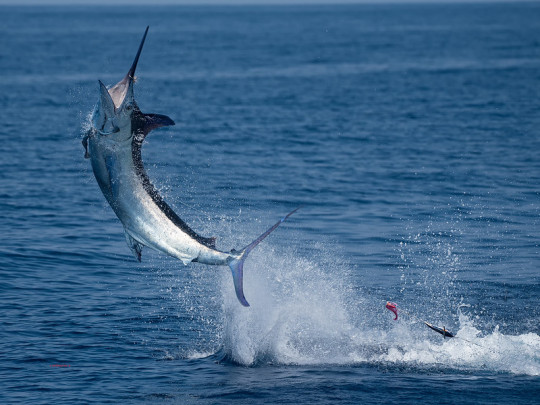
A blue marlin (Makaira sp.) leaps into the air mid-hunt off the coast of Costa Rica
by Leonardo Sanchez
#blue marlin#marlins#bony fish#fish#makaira#Istiophoridae#Istiophoriformes#actinopterygii#chordata#wildlife: costa rica#wildlife: central america
79 notes
·
View notes
Text
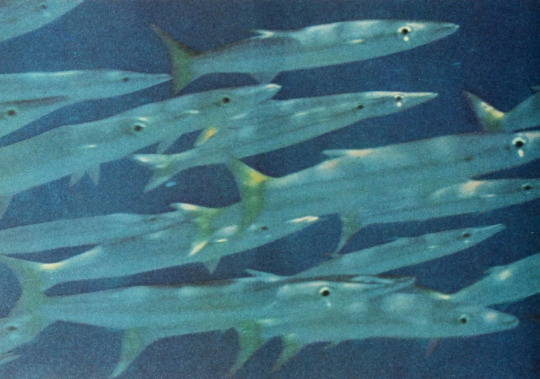
A school of barracuda
By: Unknown photographer
From: Disney’s Wonderful World of Knowledge
1971
831 notes
·
View notes
Text
It occurs to me that I have yet to cover an actual bony fish for Wet Beast Wednesday, so it's billfish time. Billfish are a group of related fish in the families Xiphidae (swordfish) and Istioporidae (marlins) that are knows for their long, pointed rostra, commonly known as bills. The taxonomic placement of billfish is something of an open question. Some sources place them with barracudas in the order Istiophoriformes while newer sources group billfish and barracudas with the tuna and mackerels in a group that I'm delighted to inform you are called scrombroids.

(image: a swordfish)
All 12 living species of billfish are large, migratory predators which live in the epipelagic zone (sunlit region) of the open ocean that rarely approach shore. As they either lack teeth or have small, file-like teeth, they feed primarily on small fish they can swallow whole. Billfish typically hunt schooling fish like mackerel or herring by swimming through the school, waving their bill from side to side to strike and stun and/or injure fish so they can be easily eaten on a second pass. Despite common depictions, billfish rarely impale or slice apart prey. Some species may also use their bills for defense as bills have been found imbedded in predators such as sharks. There are reports of billfish charging boats and getting their bills stuck, which is likely accidental. Many pelagic fish are attracted to floating objects so the billfish may have charged fish around the boat or mistaken the boat for a school of fish. Swordfish have broad, flat bills while marlins have rounded bills.

(image: a swordfish skeleton)
Billfish are considered highly migratory as they are constantly moving, migrating to follow the currents and find the best feeding grounds for their prey. Some species restrict their migration to certain regions (with half of the living species living primarily or exclusively in the Indian Ocean) while others, like the swordfish, live worldwide. Because of their constant migration and wide distribution, it can be hard to find and study them in the wild. Consequently, little is known of their movements and life histories, which complicates conservation efforts. All species live primarily within the epipelagic zone, but some will occasionally descend to the mesopelagic (twilight) zone. They have specialized swim bladders that can quickly compensate for pressure changes. This allows billfish in the mesopelagic to quickly ascend where other fish would have to slowly acclimate to the pressure difference. In the open ocean, speed is often one of the most important traits for both predator and prey, as there is nowhere to hide. Billfish are masters of speed. All species are capable of rapid bursts of speed, though the sailfish holds the record for the world's fastest fish. They have been reported moving up to 111 km/h (69 mph) though more modern estimates suggest this is an exaggeration and their top speed is between 37 and 55 km/h (23 to 23 mph). Like cheetahs, billfish are sprinters, only able to move so fast in short bursts. Billfish can tuck their dorsal fins into grooves on their backs to further streamline their bodies and are slightly endothermic, keeping their body temperature a few degrees above the water temperature, both adaptations that help with their speed.
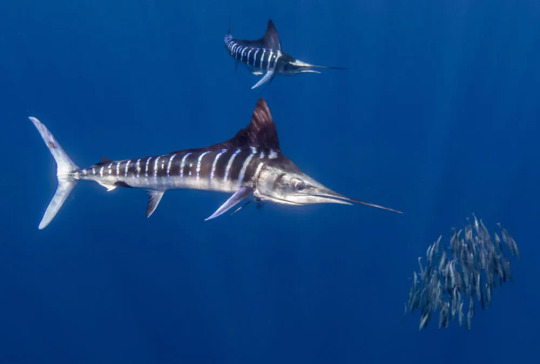
(image: two marlin and some fish that are about to have a very bad day)
The swordfish (Xiphias gladius) is the most famous billfish and has several physiological differences from its marlin cousins. Interestingly, they have both teeth and scales as juveniles, but lose them ad adults. During the day, swordfish live in deep water, hunting in the deep scattering layer (which is worthy of its own post), ascending to shallower water at night. They are known to bask with their dorsal fins out of the water and to jump out of the water, likely an attempt to dislodge lampreys and remoras. Another famous billfish is the sailfish, a species of marlin known for its extremely large dorsal fin, which extends down most of the back. Known as the sail, this fin is raised during hunting to herd prey and is kept flat against the body most of the time. Sailfish have also been seen raising their sails after hunts, probably using them to cool down after a strenuous period of activity. Sailfish were previously divided into two species, the Atlantic and Indo-Pacific species, but most sources now consider them to be the same species.

(image: a sailfish with sail raised hunting a group of small fish)
All species of billfish are popular gamefish and many are fished commercially. Anglers consider billfish to be highly coveted due to their large sizes and the fights they put up. They are one of the more dangerous gamefish as they can easily injure or kill a person with their bills while thrashing around. There are no reports of billfish attacking someone unprovoked. Many species are being overfished or are having they prey overfished and conservation efforts have been put in place for some of them.

(Image: a sword made of a swordfish bill I found at an aquarium)
#wet beast wednesday#biology#fishblr#fish#animals#ecology#zoology#marine biology#swordfish#marlin#sailfish#cw animal skeleton
163 notes
·
View notes
Text

Great barracuda (Sphyraena barracuda)
Photo by Kevin Bryant
#great barracuda#barracuda#sphyraena barracuda#sphyraena#istiophoriformes#sphyraenidae#carangaria#percomorpha#acanthomorpha#neoteleostei#euteleostei#teleostei#neopterygii#actinopterygii#osteichthyes#vertebrata#chordata
24 notes
·
View notes
Text
Black Marlin the King of Speed and Skill.
Interesting article today, let’s dig in and learn the facts and stay positive always.
Becoming a social angler requires in-depth knowledge is very important to never stop learning.
Remember to become a good angler positivity is always the best policy.
I endorse using FISHSURFING it is a worldwide social networking platform. You can share your fishing experience with other experienced anglers.
It is a great platform to find information about fishing events, shops, and guides.
Great resources about fishing can be found there.
Availability: (iOS, Android).
For iOS at
https://apps.apple.com/us/app/fishsurfing/id1235154377
For android at https://play.google.com/store/apps/details?id=cz.fishsurfing.fishsurfing

(1) They are considered to be amongst the world’s most preferred game fishes a price game fish by many renowned anglers globally. Black marlins can also be easily distinguished from other marlins due to their stiff pectoral fins which are quite visible.
(2)The Black Marlin is a strong and very fast-paced fish with silvery-white belly side with associated with strokes blue vertical stripes.
(3)The males measure a maximum length of 15ft while the females can measure more than 15 ft.
(4)The Males weigh within the regions of around 750kgs. Females tend to be much heavier often exceeding 800kgs.
(5)Black Marlins possess long protruding upper jaw.
(6)They are mostly found in humid and subtropical waters of the Pacific and Indian Oceans.

Black marlin
Black marlin Scientific classification Kingdom: Animalia Phylum: Chordata Class: Actinopterygii Order: Istiophoriformes…
en.wikipedia.org
(7)They tend to be more migratory by nature.
(8)These have huge appetites making them are carnivorous fishes. They mainly feed on smaller fishes like dolphin fish, octopuses, mackerels, and swordfish.
(9)Black Marlins reproduction system is unique they can perform external fertilization inbreeding. A pregnant marlin can carry 40 million eggs.
(10)Black marlins are known to fight fishermen for long hours due to their weight and speed it is advisable to fish for them in a group.

Black Marlin
Black marlin are one of the largest bony fish in the world, and are one of the top predators of the seas. The…
www.marlinmag.com
(11)They tend to change their skin color to bluish stripes when they become very excited.
(12)The black marlin is classified as one of the largest bonny fishes on the planet.
(13)They have an average life span of more than 25 years.
https://www.britannica.com/animal/fish
(14) They can reach a maximum speed of 80 mph that is incredible fast making it one of the fasted fishes on the planet.
0 notes
Photo

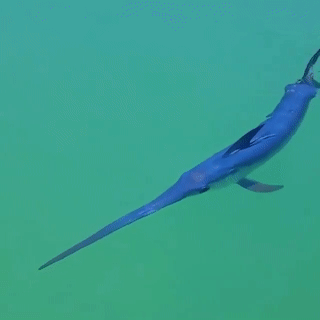
Juvenile Swordfish
(source)
7K notes
·
View notes
Text
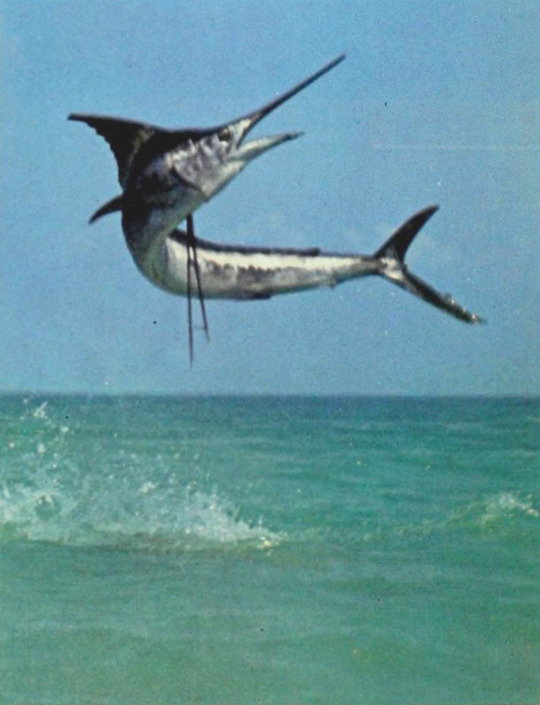
Breaching marlin
By: George X. Sand
From: The Fascinating Secrets of Oceans & Islands
1972
#marlin#istiophoriform#bony fish#fish#1972#1970s#George X. Sand#The Fascinating Secrets of Oceans & Islands
190 notes
·
View notes
Text

Barracuda
By: Unknown photographer
From: WWF Nature in Danger Stickers
1987
145 notes
·
View notes
Text
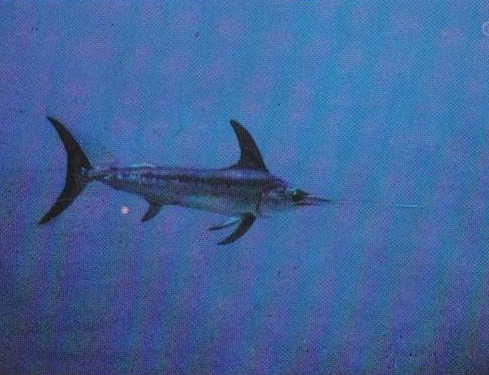
Swordfish
By: Unknown photographer
From: WWF Nature in Danger Stickers
1987
79 notes
·
View notes
Text
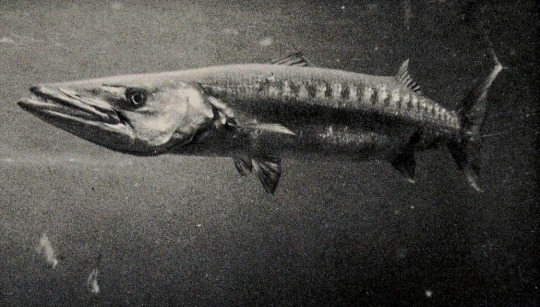
Barracuda
By: Unknown photographer
From: The Living World of the Sea
1966
#barracuda#istiophoriform#bony fish#fish#1966#1960s#unknown photographer#The Living World of the Sea
7 notes
·
View notes
Text
Taxonomy Tournament: Results of Round 1
Long post, many stats.
The three biggest landslides were Opiliones (daddy longlegs) beating Parasitiformes (ticks) (87.89%, 334 to 46 votes), Terebellida (Pompeii worms) beating Scolecida (bamboo worms) (88.94%, 193 to 24 votes), and Hemiptera (true bugs) beating Phthiraptera (lice) (91.04%, 19 to 193 votes).
The three closest matches were Perissodactyla (horses and rhinos) beating Pholidota (pangolins) (50.6%, 747 to 765 votes), Caniformia (canines, bears, foxes...) beating Feliformia (felines, mongooses...) (50.28%, 538 to 532 votes), and Struthioniformes (ostriches) and Rheiformes (rheas) tying (50%, 144 to 144 votes).
To break the tie, I will discount my own vote (for Struthioniformes), so Rheiformes win.
Interesting that the top 3 landslides were all invertebrates (actually all top 7), while the 3 closest matches were all between Chordates (actually 4).
The average winning percent was 67.10% for all matches, and was 71.28% between non-chordates and 62.91% between chordates. So the chordate matches were closer in general.
As you may have guessed from the biggest landslides, parasites fared quite poorly. While the bracket started with 9 primarily parasitic clades, only 3 made it to this round (Hirudinea [leeches], Eucestoda [tapeworms], D. medinensis [nematode]) and all three were against other parasites.
The biggest landslide among Mammals was Didelphidae (possums) beating Hyracoidea (dassies) (80.26%)
The biggest landslide among Birds was Columbiformes (pigeons and doves) beating (flamingos) (72.34%)
The biggest landslide among Non-Avian Reptiles was Serpentes (snakes) beating Rhynchocephalia (tuatara) (60.60%). The closest match among Reptiles was Iguania (iguanas, chameleons...) beating Anguimorpha (Komodo dragon) (51.09%)
The biggest landslide among Cartilaginous Fish was Myliobatiformes (stingrays) beating Rajiformes (skates) (81.20%). The closest match was Rhinopristiformes (shovelnose ray, sawfish...) beating Torpediniformes (electric rays) (51.44%)
The biggest landslide among Bony Fish (and Chordates in general) was Osteoglossiformes (African Knifefish) beating Hiodontiformes (mooneyes) (84.71%). The closest match was Toxotidae (archerfish) beating Istiophoriformes (swordfish) (50.64%).
The biggest landslide among Echinoderms was Asteroids (starfish) beating Peripodida (sea daisies) (82.95%). The closest match was Echinacea (sea urchins) beating Gnathostomata (sand dollars) (55.38%).
The closest match among Annelids was Eunicida (eg. Bobbit worm) beating Phyllodocida (eg. Gossamer worm) (54.38%)
The biggest landslide among Gastropods was Neomphalida (volcano snails) beating Umbraculoidea (false limpets) (86.67%). The closest was Conidae (cone snails) beating Strombidae (conches) (51.39%)
The biggest landslide among Cephalopods was Sepiida (cuttlefish) beating Spirulida (Ram's horn squid) (77.53%). The closest match was Oegopsida (glass squid, giant squid...) beating Myopsida (European squid, reef squid...) (61.9%).
The biggest landslide among other molluscs was Polyplacophora (chitons) beating Scaphopoda (Tusk Shells) (84.35%). The closest was Heterodonta (edible clams) beating Palaeoheterodonta (freshwater mussels) (52.08%)
The closest match among Insects was Mantodea (mantises) beating Blattodea (roaches and termites) (72.9%). Interestingly still a pretty big landslide.
The biggest landslide among Crustaceans was Thecostraca (barnacles) beating Tantulocarida (parasites of crustaceans) (83.33%). The closest match was Branchiopoda (fairy shrimp) beating Copepods (56.54%)
The closest match among Invertibrates was Eucestoda (tapeworms) beating Amphilinidea (parasites of turtles) (50.65%).
Round 2 starts tomorrow!
#Animal Tournament#Animal Tournament Announcements#biology#taxonomy#animal biology#marine biology#evolution#zoology#tumblr polls#tournament poll#poll tournament#bracket tournament
41 notes
·
View notes
Text
Animal Crossing Fish - Explained #21
Brought to you by a marine biologist with a point...lol...
Fish I’ve Covered: Click Here
Okay, don’t kill me. The joke is from Animal Crossing: New Horizons itself. When you catch today’s fish, the Blue Marlin, you make that pun about its long, pointy upper lip.
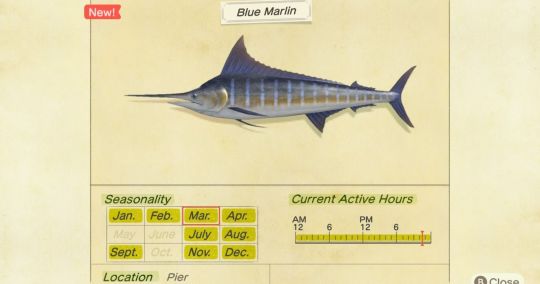
So, the Blue Marlin went away at the end of last month, but it will be back in July, so no worries! You could only catch this guy off the Pier, a new function in New Horizons. There are a handful of big, sport fish that you can only catch by fishing by the dock, and we’ll cover them this week, starting with the Blue Marlin!
First of all, let’s talk taxonomy. This is NOT a swordfish. The Swordfish is a single species in a completely different Family by itself. But these and more are all collectively called “billfish” of Order Istiophoriformes, in which they all have this elongated rostrum that they use to hunt. The species Animal Crossing: New Horizons chose was the Blue Marlin, probably because it has a circumglobal (found around the world) distribution. Now, the blue marlin is separated into two species, the Atlantic ( Makaira nigricans) and Indo-Pacific (Makaira mazara) blue marlins, but recent research suggests they are still the same species...and I really doubt AC:NH knows or cares about this distinction.
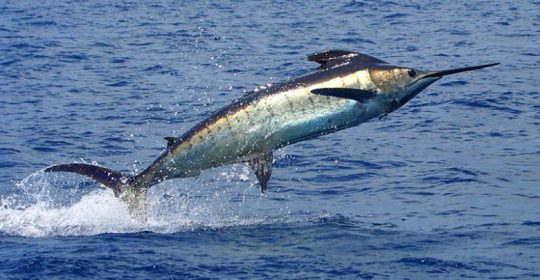
Nevertheless, this thing is an apex predator. That means that, once it’s an adult, it has very few predators of its own. The only things that have the audacity to go after this thing are large sharks that can keep up with it, namely the Shortfin Mako and Great White Shark, as well as crazy humans. Blue Marlin are FAST, as is characteristic of the billfish. Despite the fact this big GIRL (because the females can get up to four times the weight of males) can grow to be 16 feet (5m) long and weight over 1000 pounds (+500 kg), they can move at speeds of 50 mph (80 kph) as an average (meaning they can go faster than that). With all that speed and power, this is a formidable animal that can pierce through just about anything, including boat hulls. Fisher beware!
And they are MASSIVE. I know that sometimes numbers don’t mean much, so take a look at this picture to get an idea of how big blue marlin girls can get:

BIG. They go toe to toe with great white sharks gdi. They are so iconic that a blue marlin is the plot and a main character in Ernest Hemingway’s “The Old Man and the Sea”.
They are highly migratory, swimming out in the open ocean, cruising from one side of the ocean to the other and back again (whether that’s the Pacific or Atlantic basin, doesn’t matter). Warm currents in both these oceans, the Gulf Stream or the Agulhas Current, have major influences on the seasonality of this fish, and I think that’s why it has such a funky “seasonality” in AC:NH.
And there you have it. Fascinating stuff, no?
#animal crossing#ac: new horizons#fish#blue marlin#science in video games#animal crossing fish explained
22 notes
·
View notes